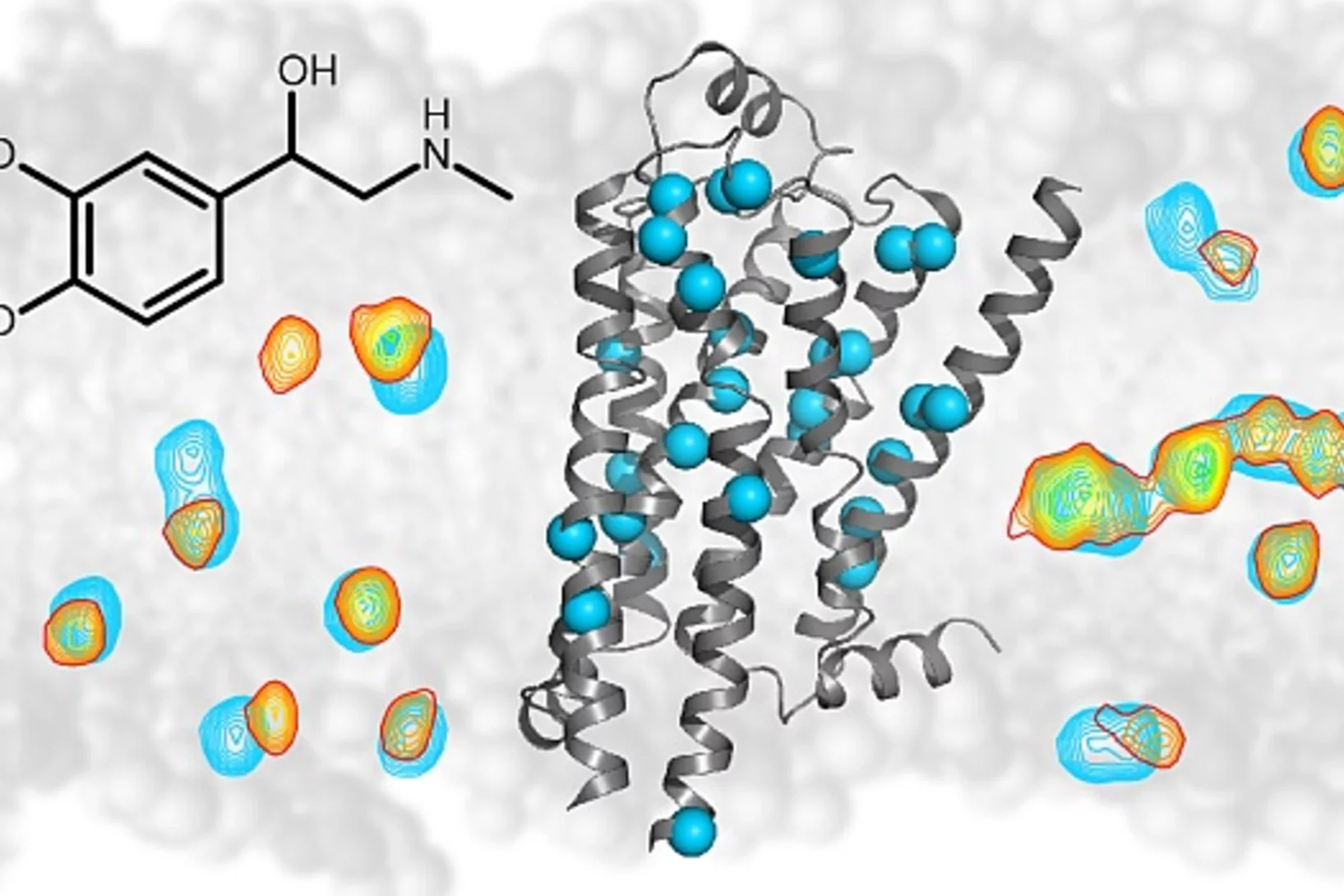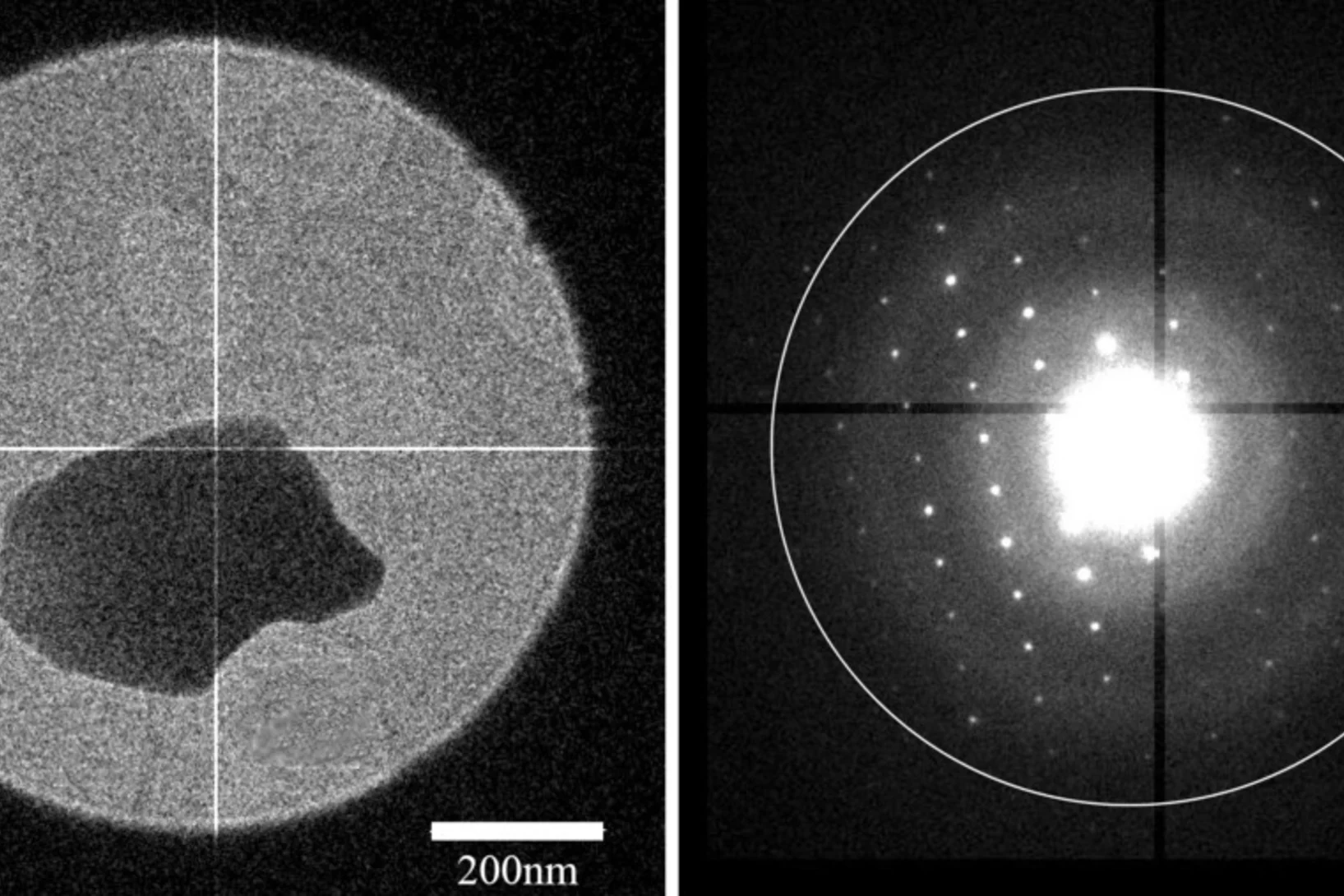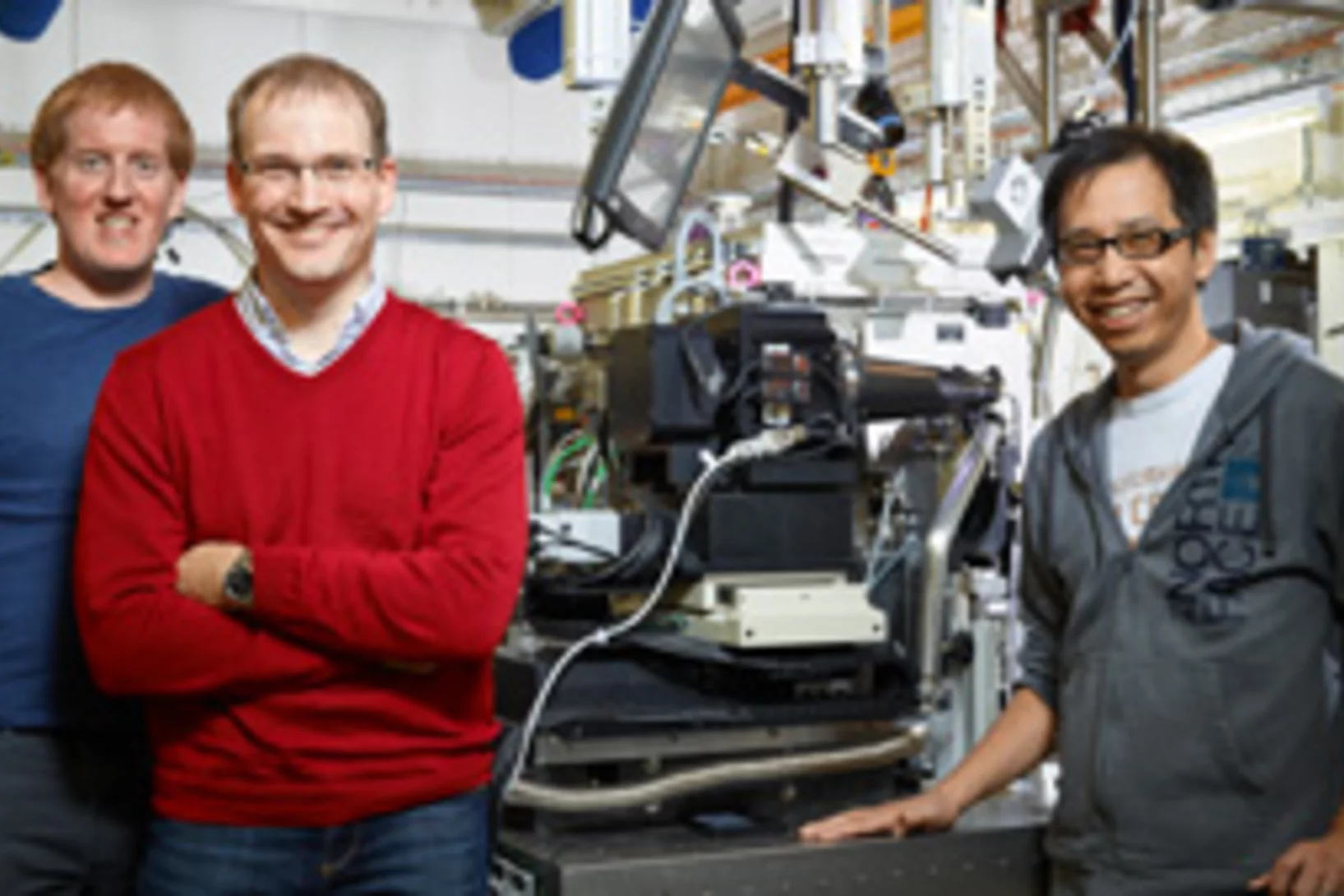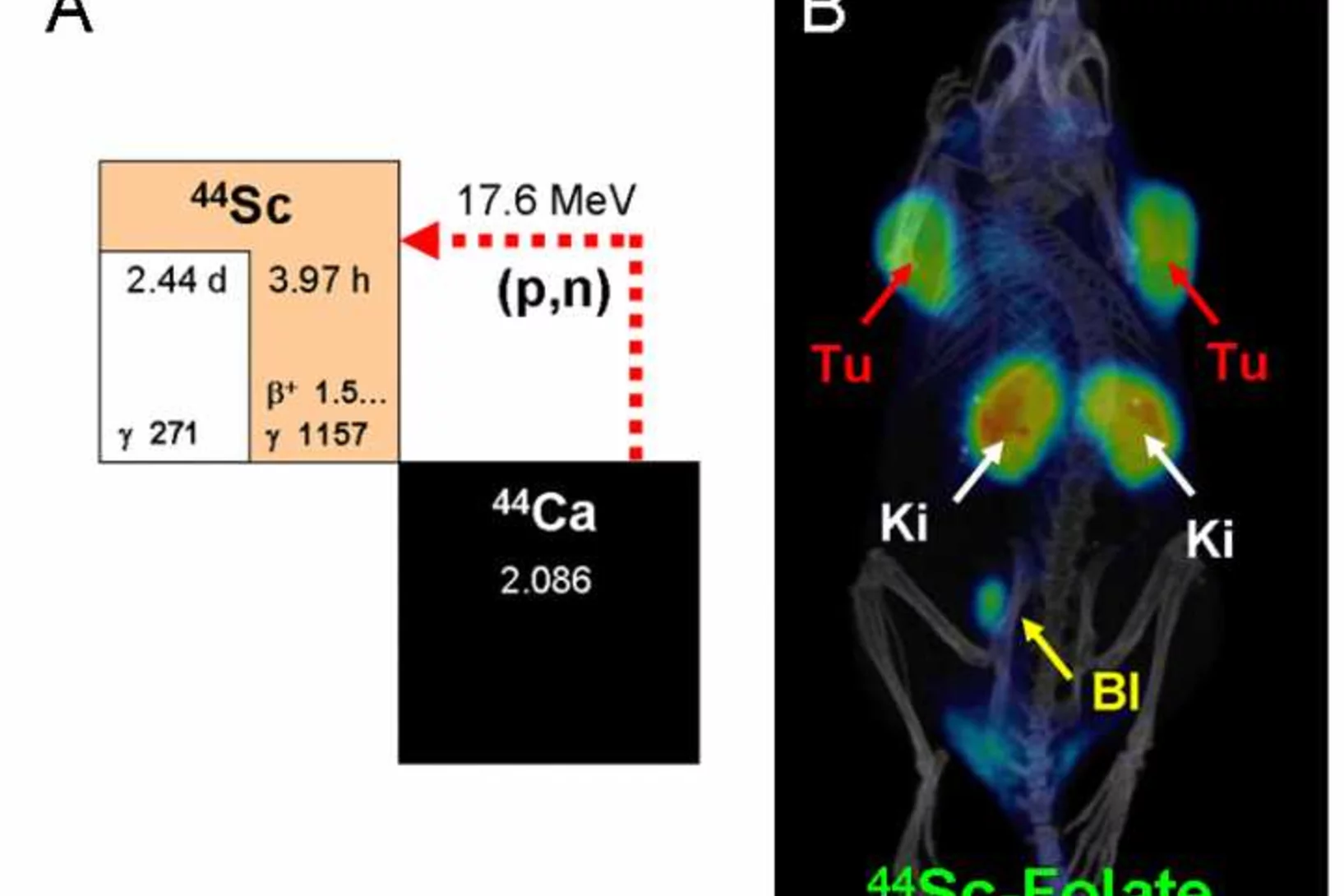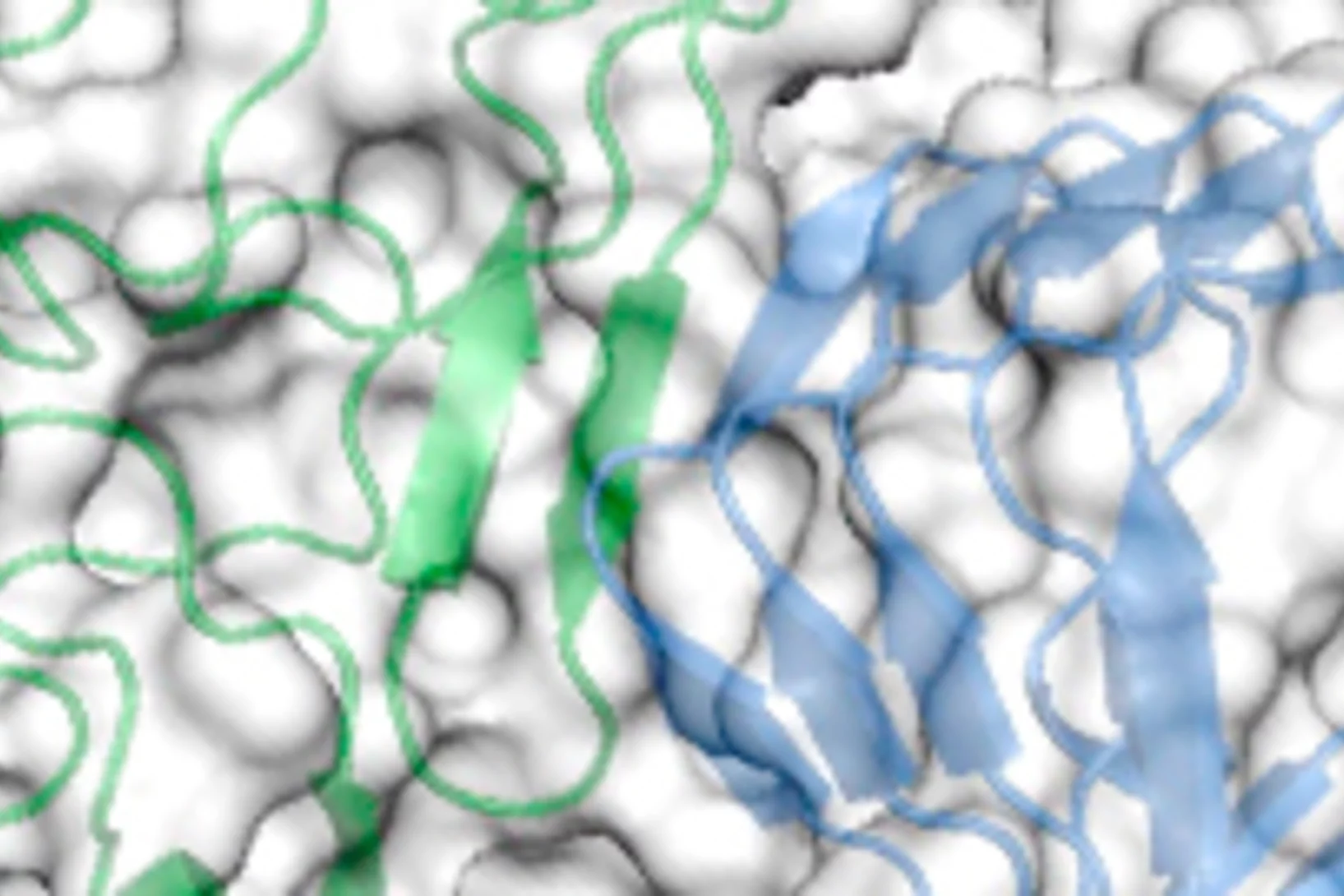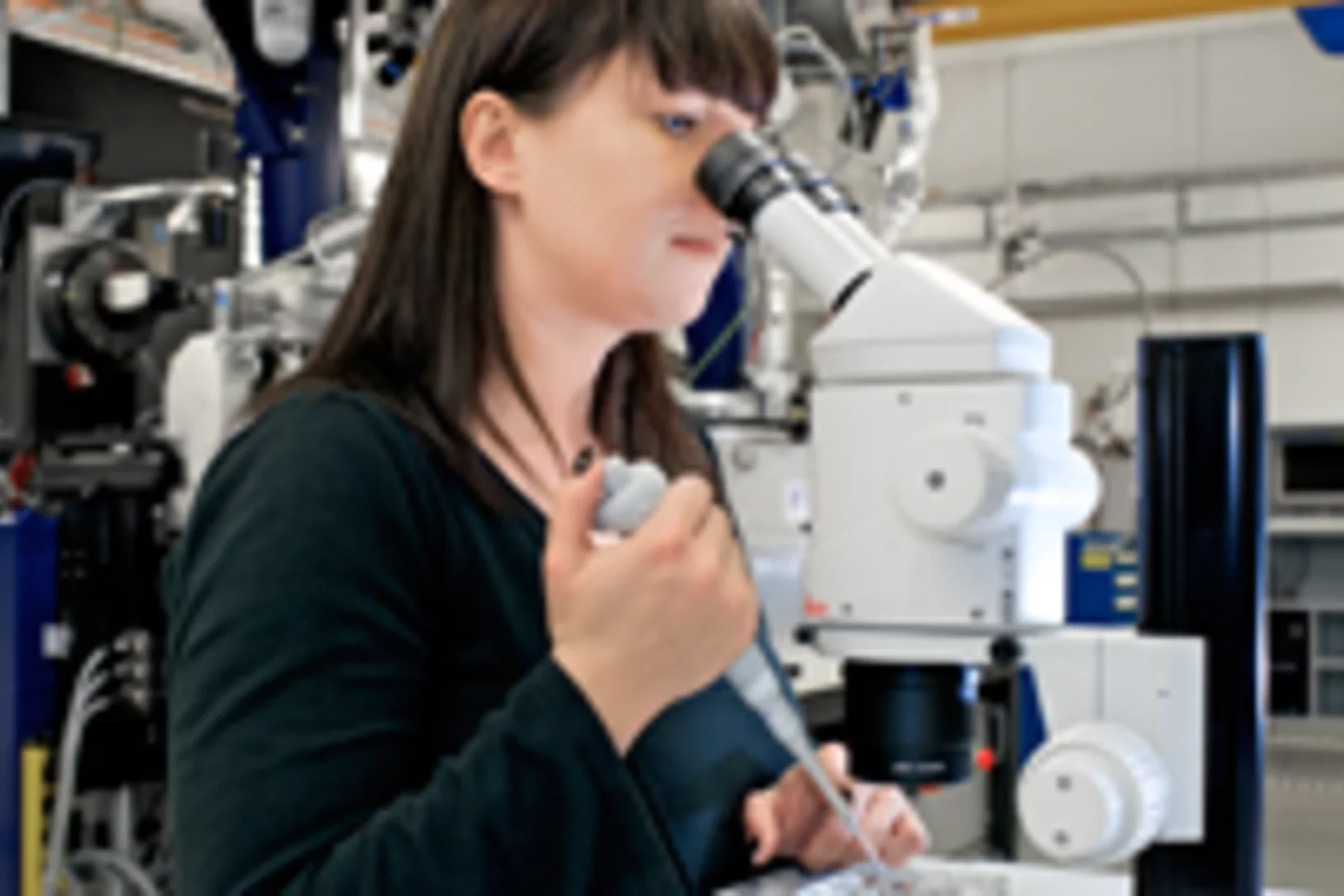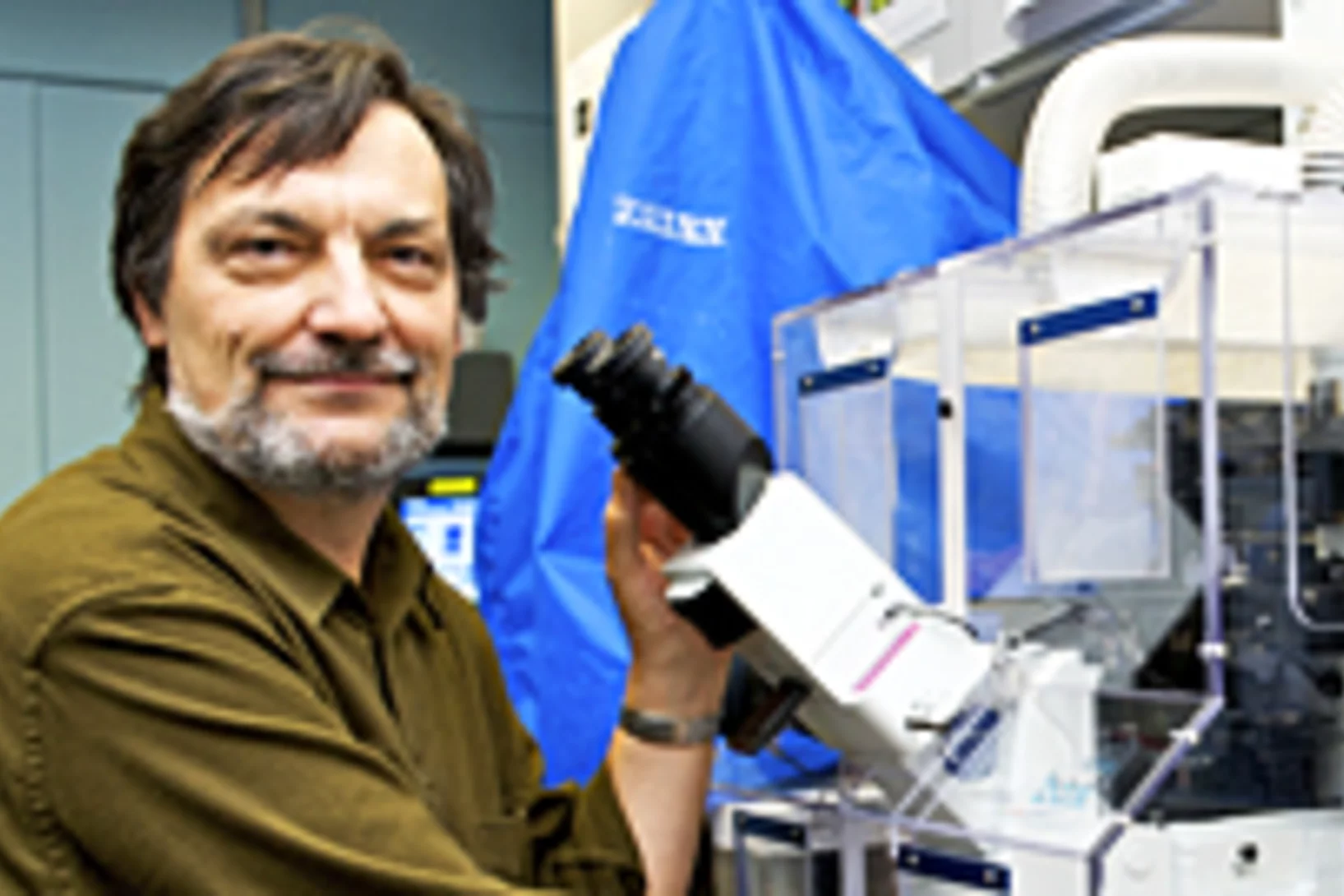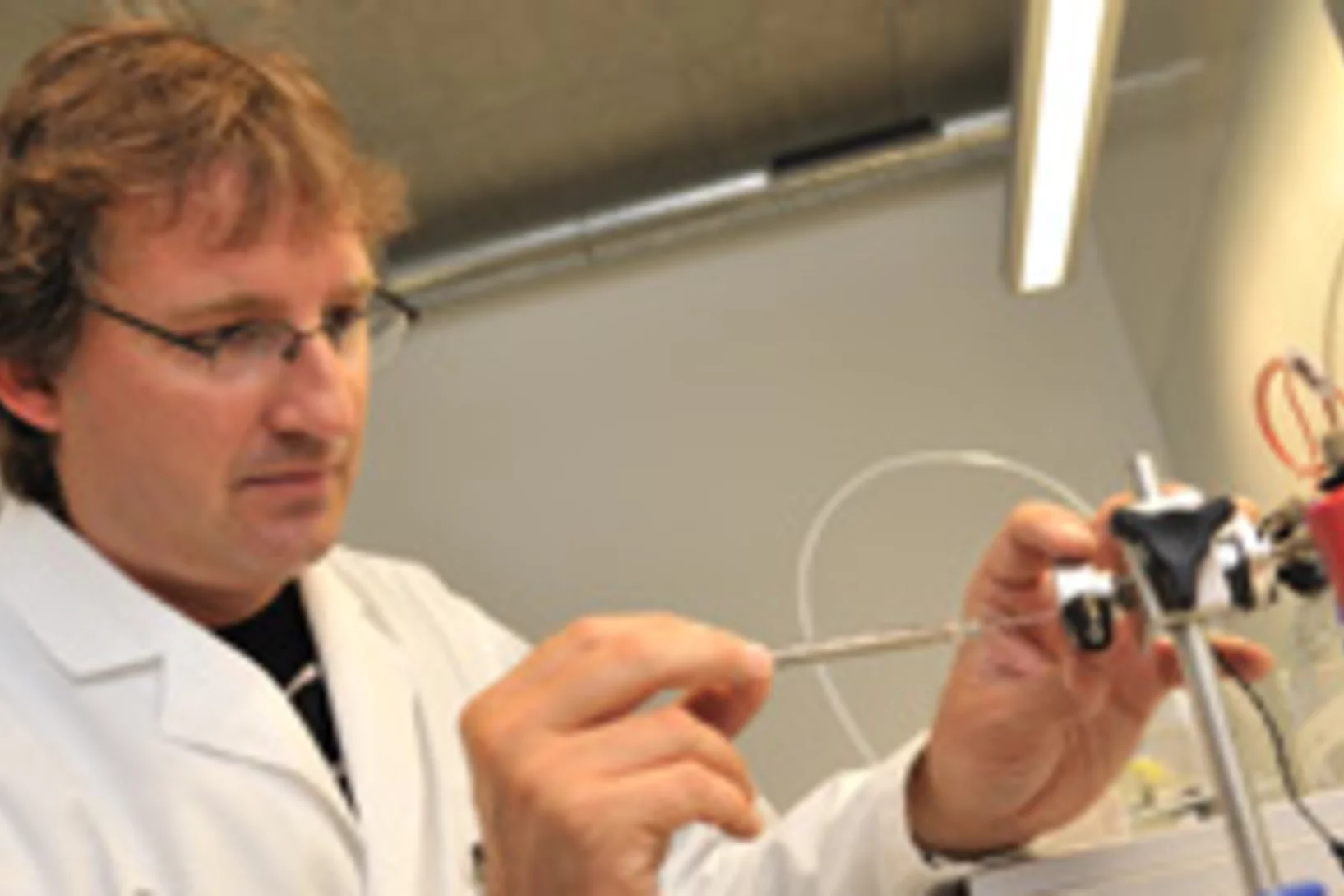Probing what sets the heart racing
New insights into the workings of important drug receptorsMany medical drugs operate on specific receptors located in the outer walls of our body’s cells. One of these is called the beta-1 adrenergic receptor. Among other things, it is responsible for palpitation, the racing pulse that we feel with stage fright or infatuation. How it transmits signals to the cellular interior can now be revealed in detail. These findings could help scientists better understand many drugs' mode of action.
Determining the structures of nanocrystalline pharmaceuticals by electron diffraction
A new type of detector developed by Dr. van Genderen enables the structure determination of pharmaceutical compounds with electron diffraction at room temperature. The group concentrate on expanding this new technique to macromolecular compounds.
New details of the transmission of stimuli in living organisms unveiled
Researchers unveil new details of how cells in a living organism process stimuli. So-called G-proteins, which help conduct external stimuli that reach a cell into its interior, play a central role here. For the first time, the study shows which parts of the G-proteins are vital for their function. Researchers from the Paul Scherrer Institute PSI, ETH Zurich, the pharmaceutical company Roche and the British MRC Laboratory of Molecular Biology report their results in the journals Nature and Nature Structural and Molecular Biology.
Together, not alone
Decoding biomolecules at SwissFEL and SLSProteins are a coveted but stubborn research object. A method developed for x-ray free-electron lasers and PSI’s future SwissFEL should now help researchers to make good headway in this field. It involves x-raying many small, identical protein samples consecutively at short intervals, thereby avoiding the main problem that protein research has faced thus far: producing samples in a sufficient size.
Promises of cyclotron-produced 44Sc as a diagnostic match for trivalent beta - emitters: In vitro and in vivo study of a 44Sc-DOTA-folate conjugate
Research Division Biology and Chemistry (BIO), Folate Receptor Targeting Group, Head Cristina Müller. In recent years, implementation of 68Ga-radiometalated peptides for PET imaging of cancer has attracted the attention of clinicians. Herein, we propose the use of 44Sc (half-life = 3.97 h, average β+ energy [Eβ+av] = 632 keV) as a valuable alternative to 68Ga (half-life = 68 min, Eβ+av = 830 keV) for imaging and dosimetry before 177Lu-based radionuclide therapy.
How botox binds to neurons
Botox is a highly dangerous toxin that causes paralysis. In cosmetic applications it is used to temporarily eliminate wrinkles and in medicine as a treatment for migraine or to correct strabismus. An international research team has now established how the toxin molecule binds to the neuron whose activity is then blocked by the poison. The findings may be useful for the development of improved drugs with a lower risk of overdosage.
A glimpse inside the control centres of cell communication
Numerous processes taking place within our body, such as sight, smell or taste, are accomplished by an important family of sensors on cell surfaces, which are known as G protein-coupled receptors (GPCR). Researchers have now compared the hitherto known structures of GPCRs and discovered a stabilising framework of fine struts that is characteristic for the architecture of the entire GPCR family. Knowledge about this constructional feature, which has been conserved over the course of evolution, can be of significant assistance in the development of new pharmaceuticals.
How stabilised cell fibres prevent cancer cell division
Anti-cancer drugs are used under the heading of Chemotherapeutics to prevent cells from dividing. Because the cells in a growing tumour divide more frequently than others, tumour cells are damaged more severely. Scientists at the Paul Scherrer Institute and the ETH Zurich have now clarified the exact mechanism of action of one class of these drugs. The data acquired is so accurate, that targeted drugs could now be developed that are even better suited to fulfil their task.
Nobelpreiswürdig: G-Protein-gekoppelte Rezeptoren
Der Nobelpreis für Chemie geht in diesem Jahr an Robert J. Lefkowitz und Brian K. Kobilka. Sie haben herausgefunden, wie eine Familie von Rezeptoren funktioniert, die man G-Protein-gekoppelte Rezeptoren (GPCR) nennt. Auch am PSI leisten Wissenschaftler Beiträge auf diesem Forschungsgebiet.This news release is only available in German.
Wenn die Datenleitung in die Zelle versagt
Lebende Zellen empfangen dauernd Informationen von aussen, die über Rezeptoren in das Zellinnere weitergeleitet werden. Genetisch bedingte Fehler in solchen Rezeptoren sind der Grund für zahlreiche Erbkrankheiten darunter verschiedene hormonelle Funktionsstörungen oder Nachtblindheit. Forschern des Paul Scherrer Instituts ist es nun erstmals gelungen, die exakte Struktur eines solchen fehlerhaften Rezeptors aufzuklären.This news release is only available in German.
The basic structures of sight deciphered
At the beginning of the process of sight, light interacts with a protein molecule called Rhodopsin. This molecule contains the actual light sensor that is stimulated by the incoming light and changes its form, in order to trigger the rest of the process. Researchers have now managed to determine the exact structure of the Rhodopsin molecule in its short-lived, excited state. From this, they have obtained a precise picture of the first step of the process of sight.
Attacking the lifeline of tumour cells
Researchers at Biomedicum Helsinki, Finland, and the Paul Scherrer Institute (PSI) in Villigen, Switzerland, have determined the crystal structure of the ligand-binding domain of a vascular endothelial growth factor (VEGF) receptor in complex with one of its ligands (VEGF-C).
Ticket für die Reise durch die Zelle
Publikation in Cell. Forscher entdecken Mechanismus für wesentliche Erkennungsvorgänge in lebenden Zellen. Über ihre Ergebnisse berichten die Forscher in der neuesten Ausgabe der Fachzeitschrift Cell.This news release is only available in German.

